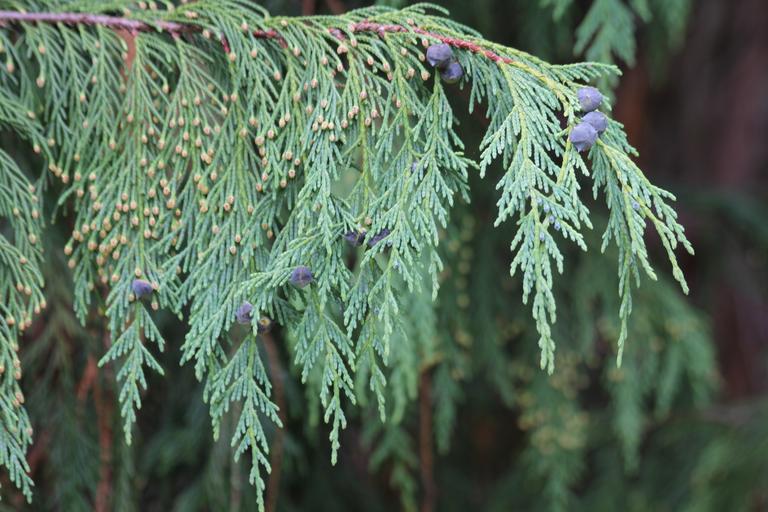MAKE A MEME
View Large Image

| View Original: | Chamaecyparis_nootkatensis.jpg (5184x3456) | |||
| Download: | Original | Medium | Small | Thumb |
| Courtesy of: | www.flickr.com | More Like This | ||
| Keywords: outdoor foliage plant Cupressus nootkatensis is a species of trees in the cypress family native to the coastal regions of northwestern North America. This species goes by many common names including: Nootka cypress, yellow cypress, Alaska cypress, Nootka cedar, yellow cedar, Alaska cedar, and Alaska yellow cedar. The specific epithet "nootkatensis" is derived from its discovery on the lands of a First Nation of Canada, those lands of the Nuu-chah-nulth people of Vancouver Island, British Columbia, who were formerly referred to as the Nootka. Cupressus nootkatensis is an evergreen tree growing up to 40 meters (133 feet) tall, commonly with pendulous branches. The foliage is in flat sprays, with dark green, 3–5 mm long scale-leaves. The cones have 4 (occasionally 6) scales, and resemble the cones of Mexican Cypress (Cupressus lusitanica, another Cupressus species which can show foliage in flat sprays) fairly closely, except being somewhat smaller, typically 10–14 mm diameter; each scale has a pointed triangular bract about 1.5–2 mm long, again similar to other Cupressus and unlike the crescent-shaped, non-pointed bract on the scales of Chamaecyparis cones. The Caren Range on the west coast of British Columbia is home to the oldest Nootka Cypress specimens in the world, with one specimen found to be 1,834 years old (Gymnosperm Database). en.wikipedia.org/wiki/Cupressus_nootkatensis Cupressus nootkatensis is a species of trees in the cypress family native to the coastal regions of northwestern North America. This species goes by many common names including: Nootka cypress, yellow cypress, Alaska cypress, Nootka cedar, yellow cedar, Alaska cedar, and Alaska yellow cedar. The specific epithet "nootkatensis" is derived from its discovery on the lands of a First Nation of Canada, those lands of the Nuu-chah-nulth people of Vancouver Island, British Columbia, who were formerly referred to as the Nootka. Cupressus nootkatensis is an evergreen tree growing up to 40 meters (133 feet) tall, commonly with pendulous branches. The foliage is in flat sprays, with dark green, 3–5 mm long scale-leaves. The cones have 4 (occasionally 6) scales, and resemble the cones of Mexican Cypress (Cupressus lusitanica, another Cupressus species which can show foliage in flat sprays) fairly closely, except being somewhat smaller, typically 10–14 mm diameter; each scale has a pointed triangular bract about 1.5–2 mm long, again similar to other Cupressus and unlike the crescent-shaped, non-pointed bract on the scales of Chamaecyparis cones. The Caren Range on the west coast of British Columbia is home to the oldest Nootka Cypress specimens in the world, with one specimen found to be 1,834 years old (Gymnosperm Database). en.wikipedia.org/wiki/Cupressus_nootkatensis | ||||